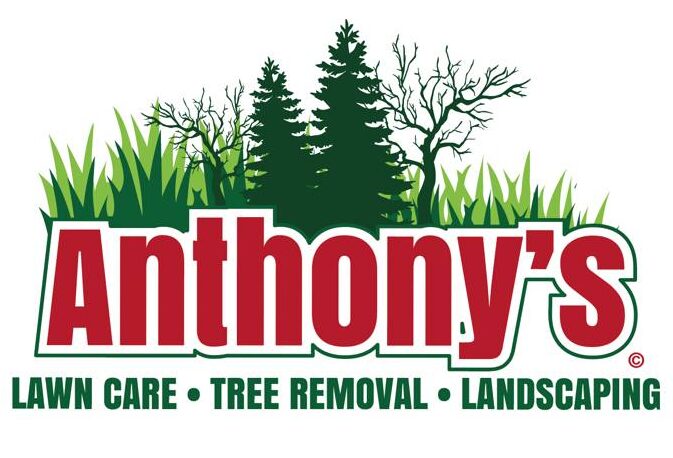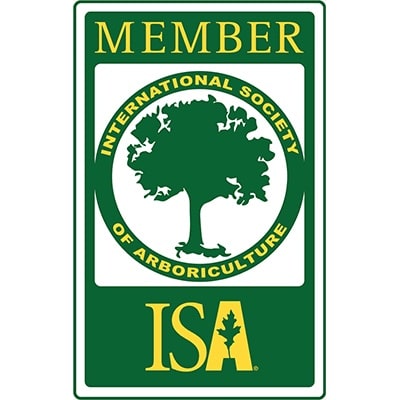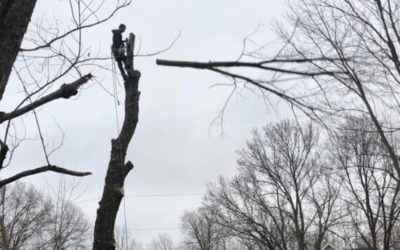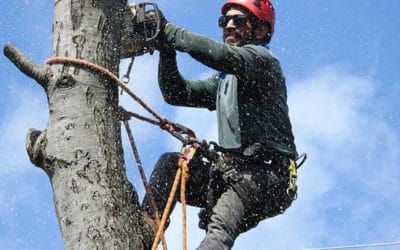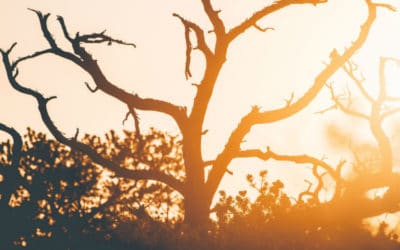Answers to the question “What Tree Is This?”
Southern Indiana, Bloomington and its surrounding areas especially, is very dense with many beautiful trees. However, trees, much like people, have a finite lifespan. When they die they can cause safety issues for people or surrounding structures. If you see trees that don’t look well, immediately contact a professional (Anthony’s does free estimates) and put together a course of action for the tree.
Use this free tree identification guide to help you identify types of trees (we focused on Indiana but this applies to anyone.) If you have questions please feel free to give us a call.
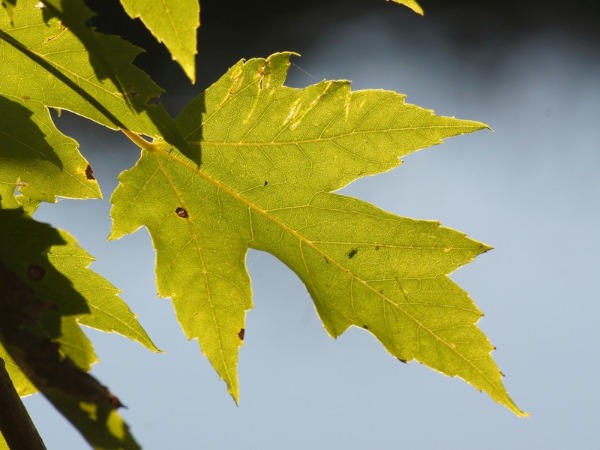
Silver Maple
A common tree in the Bloomington area, silver maples are generally hardy trees and resist wet weather as well as moderate drought. It has 5 lobed leaves and has many winged seeds that the people of Bloomington are probably familiar with. While hardy, it can be prone to limb damage and Verticillium.
Sugar Maple
Sugar Maple is the most common tree in Indiana. It also has a high mortality rate due to factors such as drought, defoliation by insects, stresses cause by humans or simply old age. Many cases stresses from people or tap holes for instance will be a route of entry for wood-eating organisms such as Verticillium.
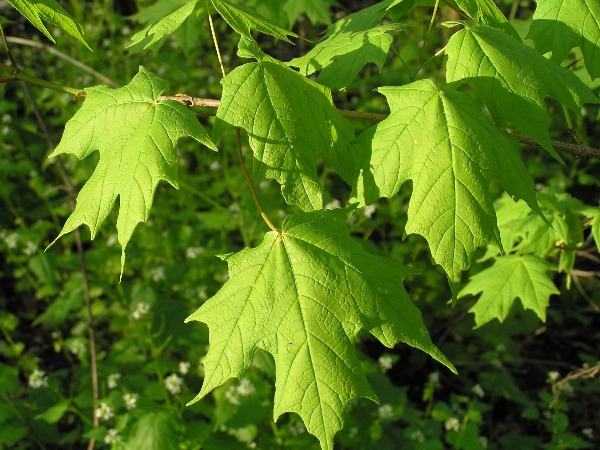
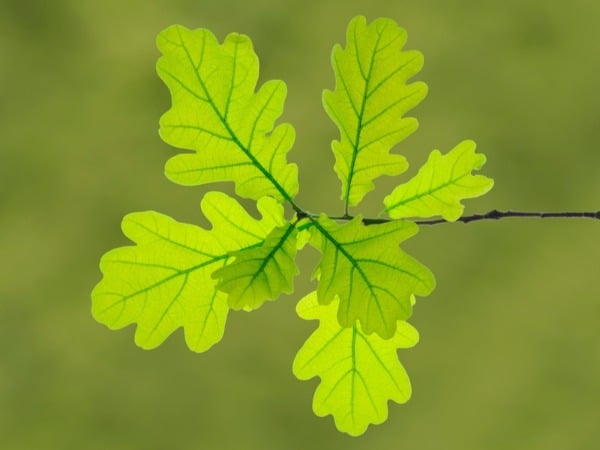
White Oak
One of the most famous and widely know trees in Bloomington. It can be found in many areas and grows quite large. In terms of volume it is one of the most abundant trees. These are well known as acorn producing trees, with each tree generating hundreds to thousands of acorns per year. They’re sensitive to soil compaction disturbances, such as large machinery or roots growing into foundations. This can cause death to the tree and create hazards.
Black Walnut
A large hardwood that is prized for its dark and attractive grain. Walnut is a relatively common tree in the Bloomington area but is often logged on private land because it can be quite expensive. It’s also well known for the nuts it bears. The leaves are compound and can be from 12-24” in length. They consist of 15-23 finely-toothed leaflets. The tree generally has a narrow growing range as well, it doesn’t tolerate areas that are too wet or too dry and it needs full sun. It is thought they could be killed by late spring frosts as well as droughts.
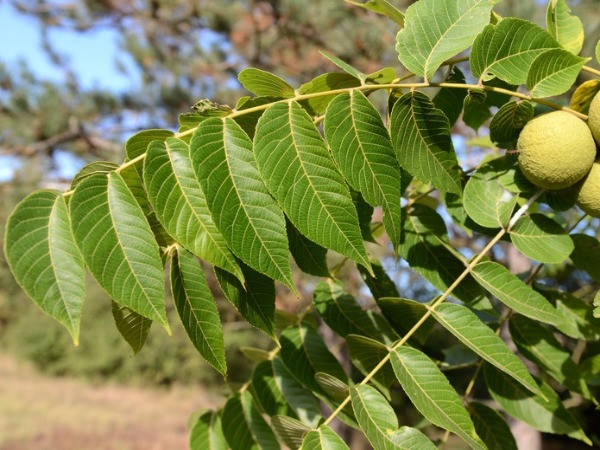
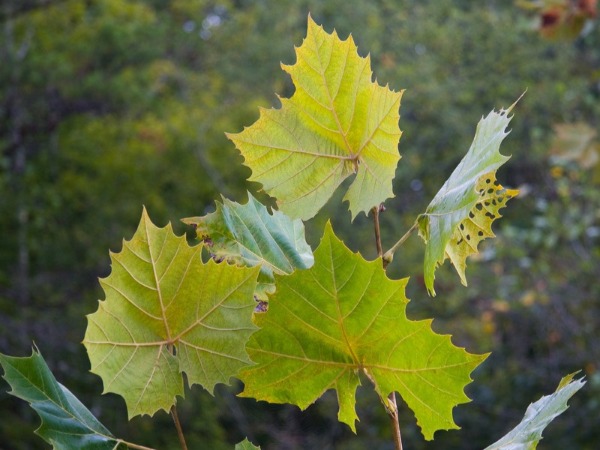
Sycamore
A famous tree of Indiana, it’s notable due to its bone-white upper branches and can attain large diameters up to 15 feet! Sycamore tolerate wet areas and flooding, however they can be susceptible to drought. The most damaging disease for sycamores is called anthracnose. They also can sustain significant damage due to ice. Ice storms and cold weather can create potential safety issues in the winters which must be immediately dealt with.
Pine
A somewhat uncommon tree in Indiana forests, pines were often planted in large groups so single trees in forested areas are somewhat rare. Pine trees, such as the Eastern White Pine, are not native to Monroe county but to the Northeast area of the state. They were often planted as wind breaks many years ago. Pine trees do not live long but typically can tolerate droughts well. Many pine trees are dying in Monroe county that were planted this past century. They’re also a soft wood and very dangerous to leave around when dead, they are easily blown down during storms.
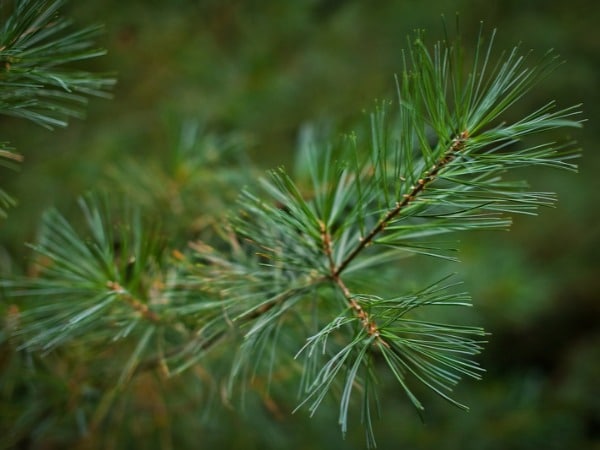
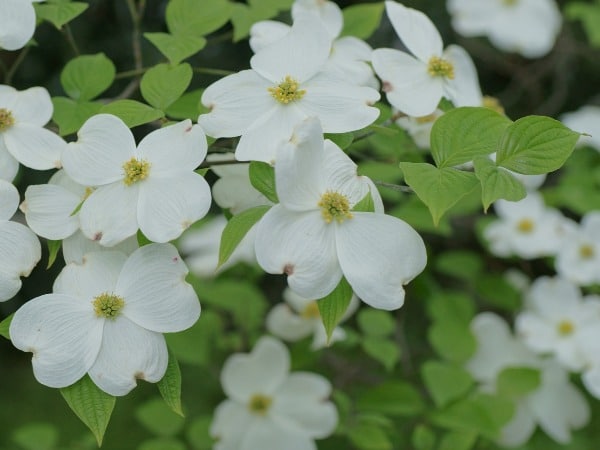
Dogwood
A highly popular tree that blooms beautifully, usually white or pink, in the Spring. Dogwoods are considered “understory” trees which means they don’t grow that tall and tolerate a lot of shade. They prefer moist soils and grow along with maple and white oak forests. They’re a wonderful tree for yards simply because they look very nice and are generally low maintenance. Rarely are professionals needed for trimming, pruning or emergency removal.
Yellow (Tulip) Poplar
Known commonly as a “Tulip Poplar”, Yellow Poplar is Indiana’s state tree, however it has the second highest mortality rate in Indiana. While it has a lower mortality rate than black oak by a per tree basis, the timber volume and number of trees dying is considerably higher due to it simply being a more common tree.
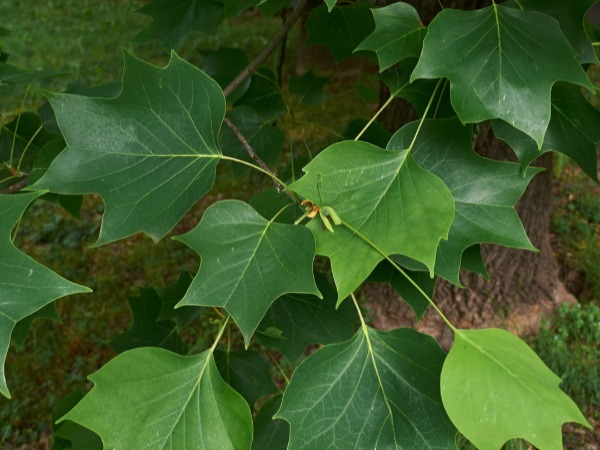
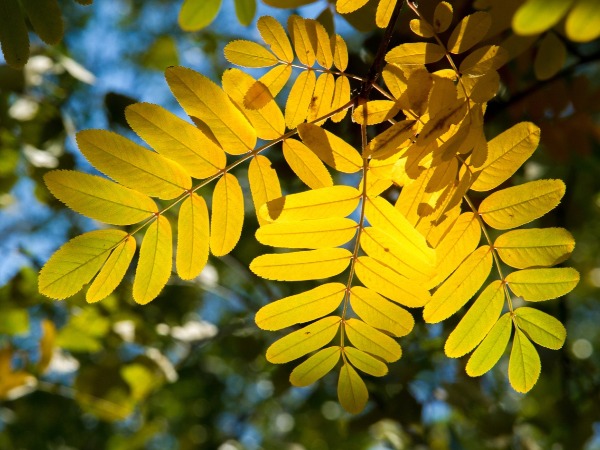
White Ash
The third highest mortality rate of trees in Indiana. White ash is common and very difficult to deal with due to the hardness of its wood. Ash trees are susceptible to the infamous emerald ash borer which can cause death for ash trees within 5-10 years. White ash is an excellent tree used for baseball bats, pool cues, furniture and a myriad of other things. White ash trees have 5 large spade-shaped leaflets on a central stalk.
Hickory
The most famous and common variety is the shagbark hickory. It is certainly the most common in the Bloomington area; it’s easily identified by its very “shaggy” bark that peels off easily by hand. Hickory trees have leaves very similar to ash trees and produce an edible nut consumed by many animals. Hickory is very hard and dense wood and falling limbs can cause major damage due to the wood’s inherent qualities. Hickory is susceptible to anthracnose as well as bark beetles and canker, a wood-rotting fungus, which can infest a tree through damage to the bark.
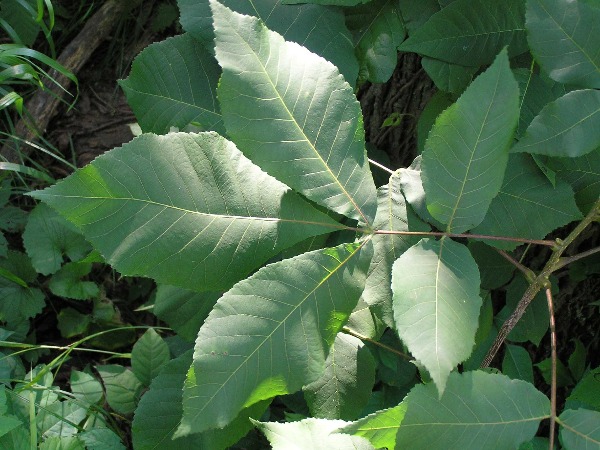
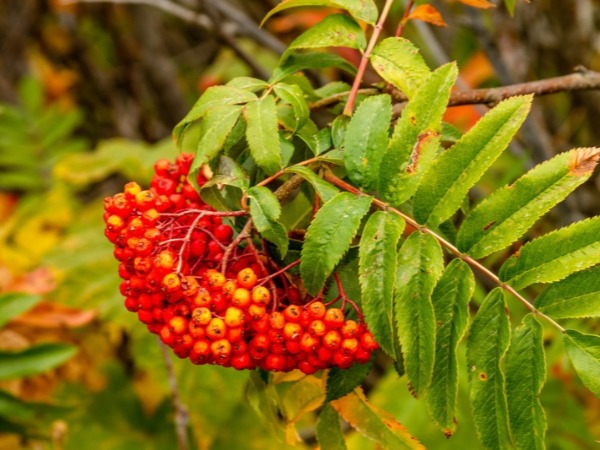
Sumac
Sumac species are numerous, the most common in Indiana is the smooth Sumac. It has alternating, compound leaves that are 1.5’-2’ in length. The leaflets are long, thin and finely serrated. The Sumac is almost a bush, generally never reaching heights over 20’. It has tiny, red fruits about an 1/8th of an inch in diameter in densely packed bunches. Many times Sumac trees are pulled as large bushes and not taken out like trees as they tend to grow in disturbed areas such as roadsides. Poison Sumac is rare in Indiana and it is unlikely to be seen in Monroe County.
Red Oak
A fast-growing oak tree that enjoys full sun and most soil types. The tree is well known as having very red leaves in the fall. Common types of Red Oaks used for landscaping are “Pin Oaks”. These oaks share many of the same qualities as red oaks, they’re also resistant to pollution and have a dense canopy. The leaves are elliptical with 5-7 deep lobes and small points at the end. These oaks are common in Monroe county and if oak wilt infects the trees in early summer they’ll be dead by late summer. If you notice an oak tree with a dead and decaying top set of branches contact a reliable arborist to check for issues. Red oaks are much more susceptible to oak wilt than white oaks.
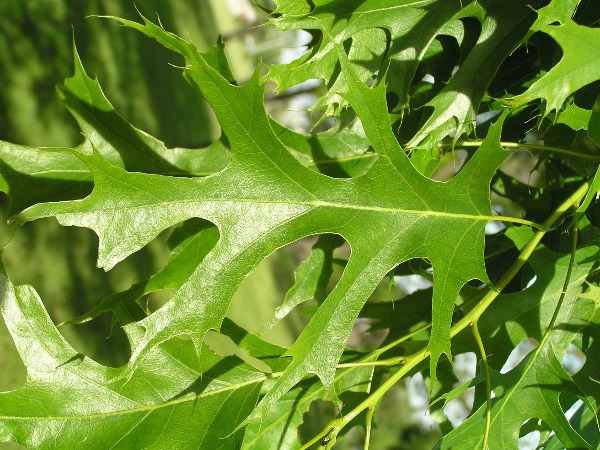
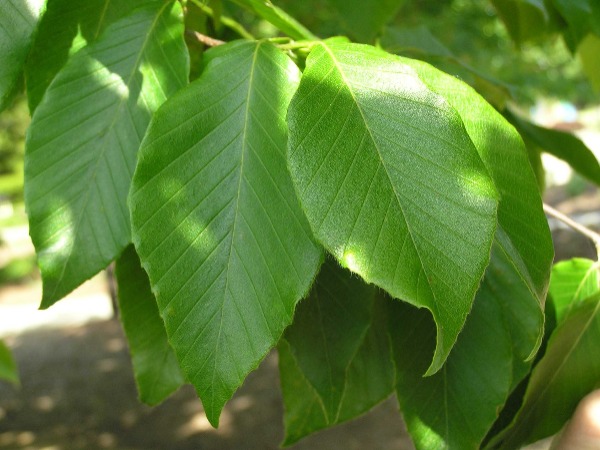
American Beech
A slow growing tree that is known for its soft, gray/white bark; people commonly carve initials into these trees. It is also well known for its light tan leaves that never completely fall off during the winter. Beech trees typically have low branches that can grow into unwanted areas – they’re trees that commonly need trimming. They prefer full sun but can tolerate shade but they cannot tolerate wet or compacted soils. They sometimes die after flooding. The leaves are about 2”-5” long and have prominent, parallel veins ending with a point the edge of the leaf.
Sassafras
A well known tree due to aromatic and color properties. Sassafras is a highly popular tree that grows from 30’ – 60’ in height and branch out significantly horizontally. The leaves are somewhat unique in that they are a rounded and lobed. They can range from 1-3 lobes, 2 lobed leaves look like mittens. Sassafras roots are frequently used to make tea after boiling them. Generally, sassafras trees are hardy and resistant to many pests and different environmental factors. They, however, can be susceptible to overly wet soils.
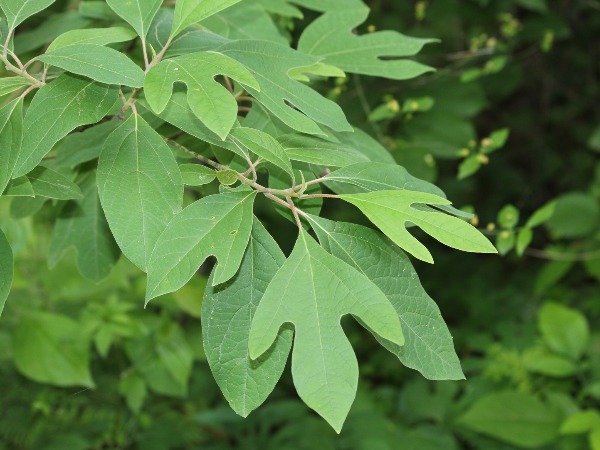
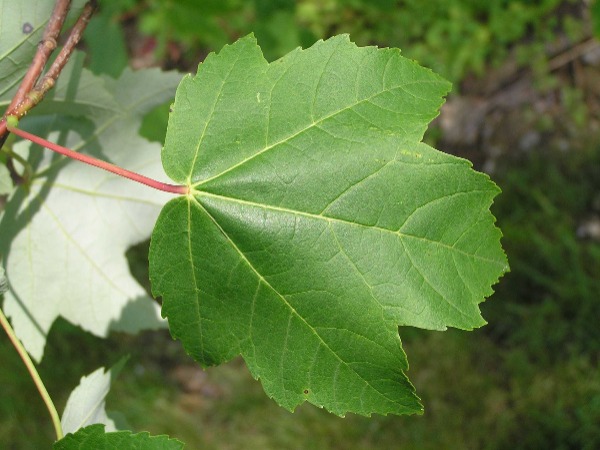
Red Maple
Well known for its brilliant scarlet foliage in autumn, the red maple is the most common deciduous tree in the eastern US and is very common in Indiana. It, like most trees in Monroe county, prefers acidic, loamy, moist, well-drained and rich soil. The red maple has one of the greatest north-south distributions of all trees, it seems to grow well despite environmental conditions. Red maples are often planted as landscaping trees due to their appearance, their quick growth and tolerance to many different soils and conditions. One issue with red maples is they can be very toxic to horses if horses eat dry wilted leaves. If you have a red maple near a horse enclosure it is recommended that it be removed immediately. Like other maples, red maples have between 3-5 triangular leaves with a rounded bottom area at the stem.
Cherry
A tree prized for its lumber; it has a stunning reddish-brown color; the black cherry can be worth a lot if sold. The black cherry tree can be identified by the white flowers in spring followed by dark pea-sized fruits in late summer. It grows quickly but can be very susceptible to ice damage. Leaves are about 2-5” long and alternate with small serrations. The tree can grow to 50-60’ in height. Black cherry trees are very susceptible to insects and diseases such as leaf spot, die back, leaf curl, root rot and fireblight. Caterpillars are a known pest that can seriously harm the trees. The trees are also very poisonous to humans and animals. If you have a black cherry tree near livestock it should be removed immediately as the tree’s parts contain cyanide which is particularly toxic when wilting.
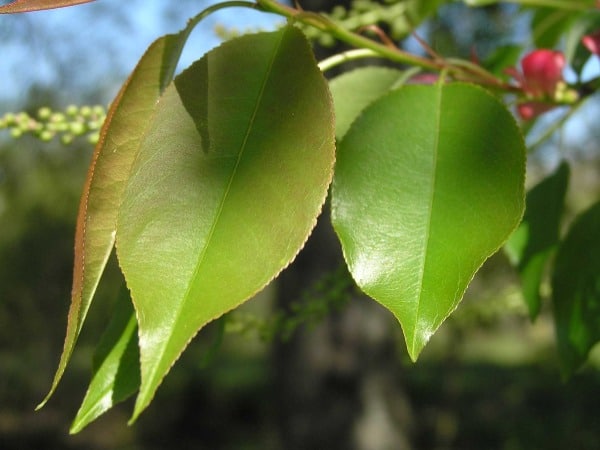
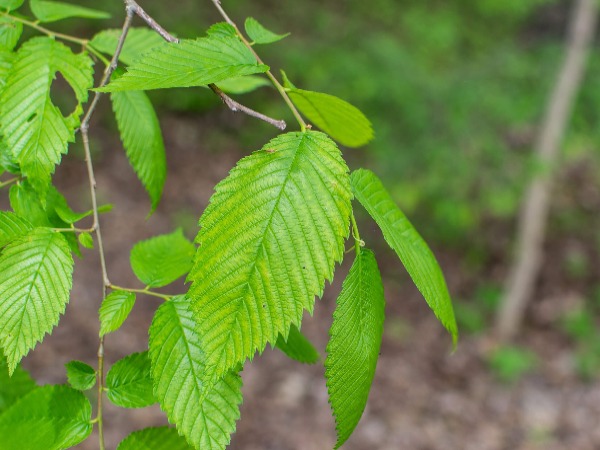
American Elm
American elm was a very common street tree and integral lumber source. Elms were very commonly planted because they were tolerant of compacted soil, grew quickly, lived a long time and had a vase-shaped form. However, starting in the 1930’s Dutch elm disease was introduced to the United States and began to decimate the population of elm trees. In fact it is still an ongoing issue and is still prevalent among elm trees, causing many to die. Elm leaves are oval in shape and serrated buy come to a point at the end with the base being slightly asymmetrical. Check for dead leaves that have not fallen off the tree – this could be a good indicator of Dutch elm disease. Trees rapidly fall to the infection, if infected late in the summer they’ll die the following year. If you see an elm that has been infected it will need to be removed or could cause serious damage or injury due to how quickly it succumbs to the disease.
Black Oak
This tree has the highest mortality rate in Indiana. It, like most oaks, can grow very large and can be very dangerous due to its immense size and the stresses from things such as drought, gypsy moth defoliation, old age or simply bad conditions.
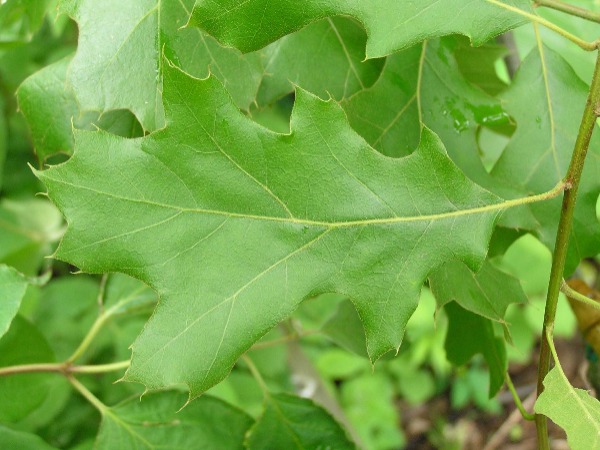
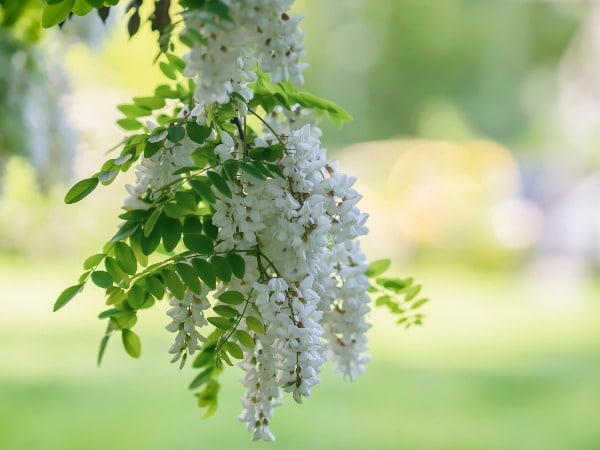
Black Locust
The Black Locust is hard, dense tree that grows in many areas of the United States. Black Locusts typically grow from 40 to 60 feet tall and about 1 to 2 feet in diameter. They prefer moist, rich soils and those with limestone origin, hence their prevalence in Bloomington. These trees are known for their rapid growth and robust thorns as well as their large bunches of fragrant white flowers that appear in the spring. The leaves are compound and contain between 9-19 oval leaflets. Black Locust trees can be susceptible to the locust stem borer causing early death and potential safety issues.




“THESE BOYS know how to get it done! If you are looking and wanting great quality at a resonable price call Anthonys. From the start of a job to the cleanup is superfast and done the right way. The owner and employees are really easy to talk to and knows what the customer wants, leaving the jobsite done right the first time!”
Tree Service Blog Posts
Check out some of our posts that are related to tree trimming, tree removal and tree health.
Why you need to trim your trees at the right time of the year
Why you need to trim your trees at the right time of the year For everything there is a season. For trimming trees, that season is the fall or winter. There are a few reasons for this that we can get into, but the important point is that you should avoid removing any...
The equipment of tree service – why it is important to have the right equipment
When it comes to DIY projects, many property owners are filled with a false sense of confidence, thinking, “This can’t be so hard — right?” With some jobs, they may be right. With others, like most tree service tasks, they may be entering into a very dangerous...
Five Dangers of Having Dead Trees on Your Property
If you are a homeowner in Bloomington, IN you know well that winter can be hard on your home & lawn. The elements take their toll, and you probably take care of your gutters, and your driveway, and get your lawn mowed. But there is a secret danger lurking in our...
Reshape Your Landscape! ©
Fast & friendly service, guaranteed! We can transform your landscape – contact us for a FREE estimate today.
Call Us for a FREE Estimate (812) 345-5694
What Makes Us Different?
Affordability
We strive to provide fair and honest pricing, and our pricing generally some of the best you will find in Bloomington and surrounding areas. We believe that our service should be affordable and we work to make sure we keep costs low to keep your prices low.
Quality People
Our staff really is the difference maker for not just our lawn mowing services, but our business in general. We work hard to hire good people who can be trusted around your home, and will deliver quality service in a timley manner.
Reliability
Ever since we started in 2014, we have been a company our clients can rely upon. With this type of business there is always going to be some flexibility needed in scheduling, but if we say we will be somewhere we honor that or make sure to communicate clearly and work to reschedule when it works for you.
Eye For Detail
In our experience some of the issues clients have with other companies is a lack of detail and attention thereof. We make sure to do the little things, from calling ahead for an appointment to cleaning up our mess to calling after to check on the job. We believe the details matter.
